
Copernical Team
Could NASA resurrect the Spitzer space telescope?
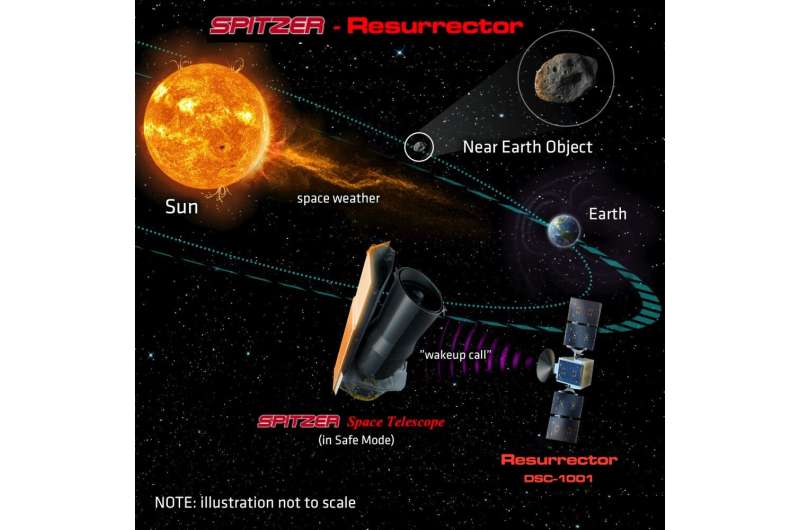
NASA's Spitzer Space Telescope served the astronomy community well for 16 years. From its launch in 2003 to the end of its operations in January 2020, its infrared observations fueled scientific discoveries too numerous to list.
Infrared telescopes need to be kept cool to operate, and eventually, it ran out of coolant. But that wasn't the end of the mission; it kept operating in "warm" mode, where observations were limited. Its mission only ended when it drifted too far away from Earth to communicate effectively.
Now NASA thinks they can reboot the telescope.
The Spitzer was one of four powerful space-based observatories in NASA's Great Observatories program. The other three are the Hubble, the Chandra X-ray Observatory, and the Compton Gamma Ray Observatory.
NASA picks Bezos' Blue Origin to build lunar landers for moonwalkers
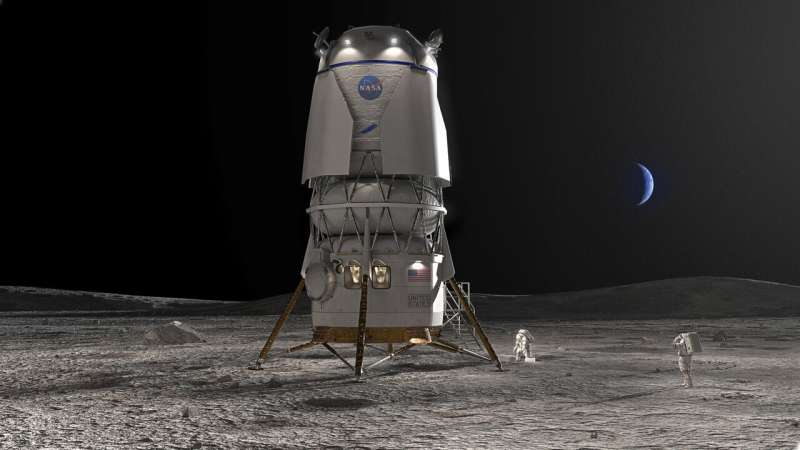
Jeff Bezos' rocket company has won a NASA contract to land astronauts on the moon, two years after it lost out to SpaceX.
Blue Origin received a $3.4 billion contract Friday to lead a team to develop a lunar lander named Blue Moon.
NASA's Lucy spacecraft adjusts course for asteroid flyby in November
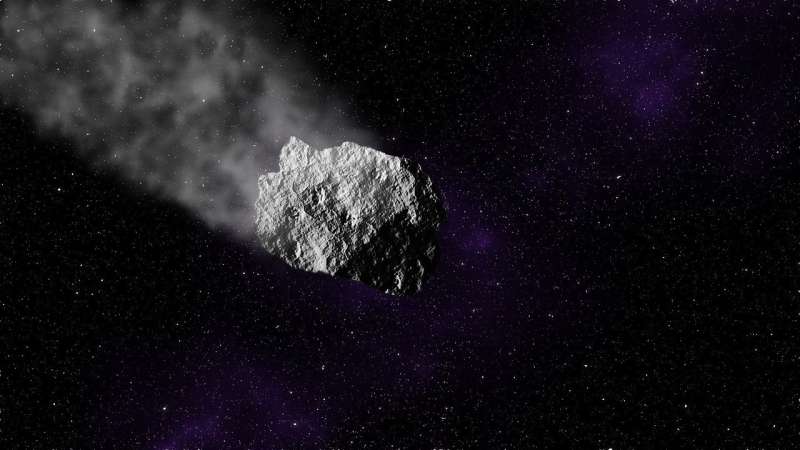
On May 9, NASA's Lucy spacecraft carried out a trajectory correction maneuver to set the spacecraft on course for its close encounter with the small main belt asteroid Dinkinesh. The maneuver changed the velocity of the spacecraft by only about 7.7 mph (3.4 m/s).
Even though the spacecraft is currently traveling at approximately 43,000 mph (19.4 km/s), this small nudge is enough to move the spacecraft nearly 40,000 miles (65,000 km) closer to the asteroid during the planned encounter on Nov. 1, 2023. The spacecraft will fly a mere 265 miles (425 km) from the small, half-mile-(sub-km)-sized asteroid, while traveling at a relative speed of 10,000 mph (4.5 km/s).
The Lucy team will continue to monitor the spacecraft's trajectory and will have further opportunities to fine tune the flight path if needed.
The Lucy team is also continuing to analyze the data collected from its spring instrument calibration campaign and make other preparations for the mission's first asteroid encounter. This encounter will provide a valuable test of the spacecraft's systems and procedures to make sure that everything operates as expected during the mission's high-speed asteroid encounters.
Axiom astronauts to train at the European Astronaut Centre
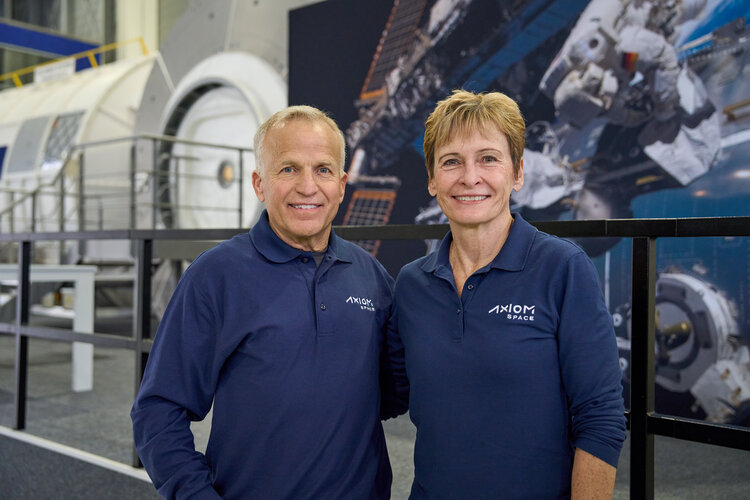
Facilities at ESA's European Astronaut Centre are buzzing with training activities. While a new generation of ESA astronauts began their basic training last month, private astronauts Peggy Whitson and John Shoffner, part of Axiom Space's Crew-2, visited the European Astronaut Centre (EAC) near Cologne, Germany, in February to receive training by ESA instructors for their upcoming journey to the International Space Station.
The Axiom-2 crew is currently scheduled to launch no earlier than 21 May 2023.
China unveils first 3D rainfall maps from inaugural Fengyun-3G Satellite
 On May 15, the China Meteorological Administration unveiled the first set of maps from the country's premier low-inclination orbit precipitation measurement satellite, Fengyun-3 G (FY-3G). These images, supplied by the National Satellite Meteorological Center, illustrate the three-dimensional structure of precipitation at different levels. This invaluable data, collected from the six payloads ab
On May 15, the China Meteorological Administration unveiled the first set of maps from the country's premier low-inclination orbit precipitation measurement satellite, Fengyun-3 G (FY-3G). These images, supplied by the National Satellite Meteorological Center, illustrate the three-dimensional structure of precipitation at different levels. This invaluable data, collected from the six payloads ab Solar-powered balloons detect mysterious sounds in the stratosphere
 Imagine if sending your science experiment 70,000 ft in the air just took painter's plastic, tape, a dash of charcoal dust, and plenty of sunlight.
Daniel Bowman of Sandia National Laboratories will present his findings using solar-powered hot air balloons to eavesdrop on stratospheric sounds at the upcoming 184th Meeting of the Acoustical Society of America, running May 8-12 at the Chicag
Imagine if sending your science experiment 70,000 ft in the air just took painter's plastic, tape, a dash of charcoal dust, and plenty of sunlight.
Daniel Bowman of Sandia National Laboratories will present his findings using solar-powered hot air balloons to eavesdrop on stratospheric sounds at the upcoming 184th Meeting of the Acoustical Society of America, running May 8-12 at the Chicag China's next space exploration to feature new faces
 China's next manned mission, the Shenzhou XVI, is scheduled to be launched within this month to transport three astronauts to the Tiangong space station, according to plans made by the China Manned Space Agency.
It will become the first crewed mission to the Tiangong station after its completion, which was done through the Shenzhou XIV and XV flights.
The Shenzhou XVI crew members, w
China's next manned mission, the Shenzhou XVI, is scheduled to be launched within this month to transport three astronauts to the Tiangong space station, according to plans made by the China Manned Space Agency.
It will become the first crewed mission to the Tiangong station after its completion, which was done through the Shenzhou XIV and XV flights.
The Shenzhou XVI crew members, w Momentus deploys Qosmosys satellite and on-orbit support of Caltech hosted payload
 Momentus Inc. (NASDAQ: MNTS) has deployed the Qosmosys Zeus-1 payload from its Vigoride-5 Orbital Service Vehicle and is now providing comprehensive hosted payload support services for Caltech's Space-based Solar Power Project payload.
The Qosmosys Zeus-1 payload was deployed in orbit on May 10, 2023. Effective May 15, 2023, Momentus is providing on-orbit support to Caltech, including prov
Momentus Inc. (NASDAQ: MNTS) has deployed the Qosmosys Zeus-1 payload from its Vigoride-5 Orbital Service Vehicle and is now providing comprehensive hosted payload support services for Caltech's Space-based Solar Power Project payload.
The Qosmosys Zeus-1 payload was deployed in orbit on May 10, 2023. Effective May 15, 2023, Momentus is providing on-orbit support to Caltech, including prov New sensors with the HOTS for extreme missions
 Modern technologies are laden with sensors - a now-customary fact of life in much of the world. On smart watches and phones, and in cars and homes, sensors help monitor health, adjust various settings for comfort, and warn of potential dangers. More widely, sensors are deployed across countless commercial and defense systems, including in the oil and gas sector, the automotive industry, alternat
Modern technologies are laden with sensors - a now-customary fact of life in much of the world. On smart watches and phones, and in cars and homes, sensors help monitor health, adjust various settings for comfort, and warn of potential dangers. More widely, sensors are deployed across countless commercial and defense systems, including in the oil and gas sector, the automotive industry, alternat Earth from Space: Oslo, Norway
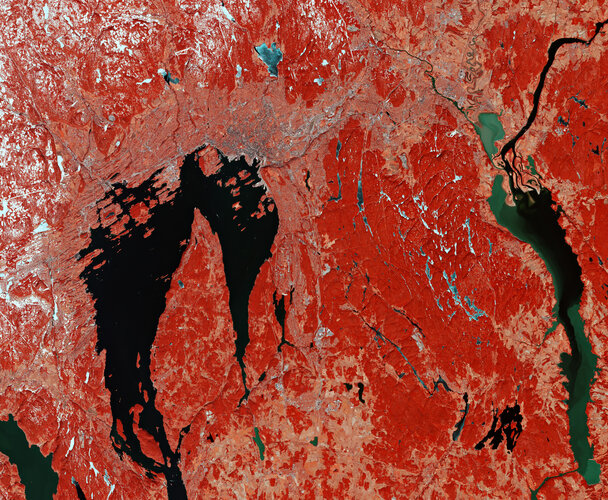 Image:
The Copernicus Sentinel-2 mission takes us over Oslo, Norway’s capital and largest city, and host of the 2023 Global Space Conference on Climate Change, taking place on 23–25 May.
Image:
The Copernicus Sentinel-2 mission takes us over Oslo, Norway’s capital and largest city, and host of the 2023 Global Space Conference on Climate Change, taking place on 23–25 May. 
